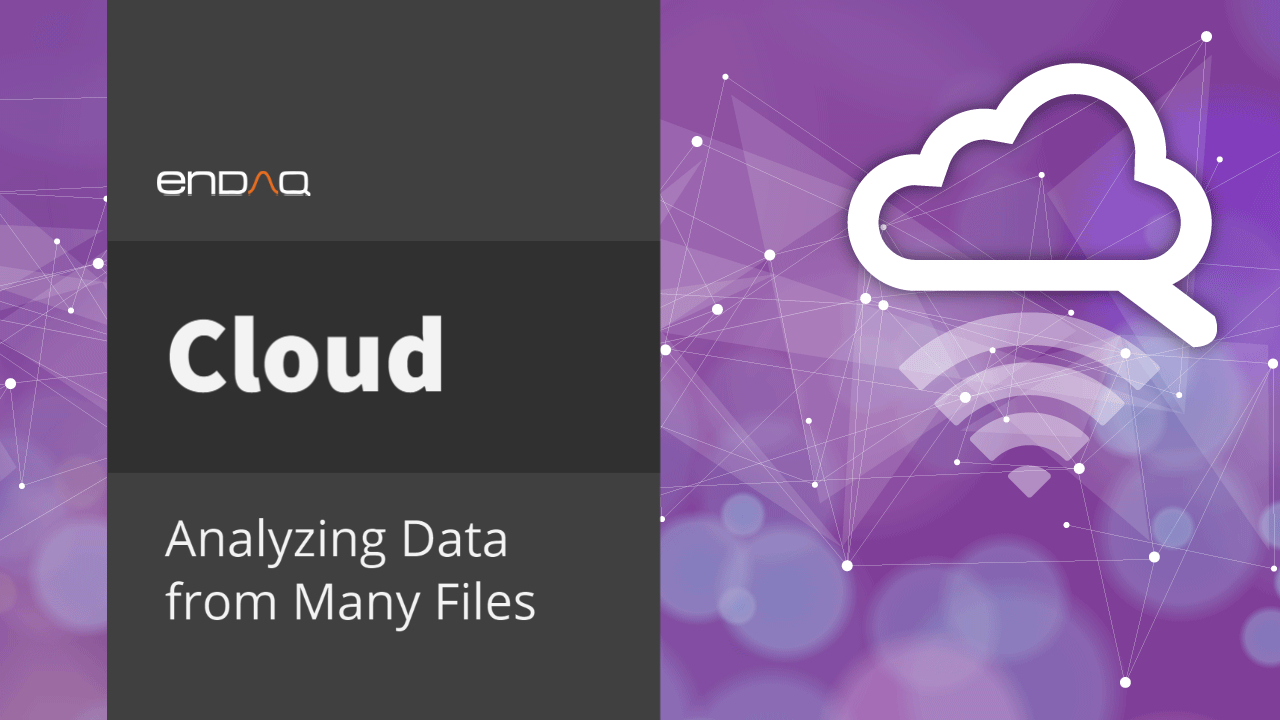enDAQ Cloud: Analyzing Summary Metrics in My Recordings
All summary metrics that are processed when files are uploaded can be sorted and analyzed in the browser, exported to CSV, or used to generate custom reports directly in the cloud.
In this Article
Analyzing Data in Cloud My Recordings Page

Once you have all your data uploaded, you can analyze all your data with these features. On your Dashboard click on "My Recordings."

You will see a table view with all your uploaded data. You will see your # of recordings uploading in the top left corner of the table. It will always pull the most recent files first. Here are the different metrics you have to analyze each file;
- Date Recorded
- Date Uploaded
- Serial #
- File Name
- Sensor Type
- Name of Sensor
- File size
- Length
- Accelerometer Sample Rate (Hz)
- Acceleration RMS (G)
- Acceleration Peak (G)
- Velocity RMS (MM/S)
- Displacement RMS (MM)
- GPS Speed (KM/HR)
- GPS Location (NMEA)
- Gyroscope RMS
- Microphone RMS
- Temperature Average (DEG C)
- Pressure Average (KPA)

When you configured your device, you could add a tag. Select "Show Tags" up top, to view all your tags in each recording. Here we configure the tags to have serial # and demo.

You can also "Filter By Tags" if you only want to see certain data.

You can Share your recordings by clicking on "Share" button and then coping the URL.

You can add new tags by selecting a recording and clicking on "Manage Tags" up top. A screen will pop up and you can create a new tag name. Then to see the tag you have create, select "Filter By Tags" up top and select the name you have created.

You can select a recording and download the file by clicking on "Download" button.

Your file will download.

Once your file downloads, copy URL.

You can delete your files by clicking the "Delete" button. You can also batch delete files to save space on your acount.

You can export the full table view with metrics by clicking on the "Export" button.

Analyzing Exported CSV Data of Summary Metrics

Once you export your data from the Cloud, it will download a CSV export, showing your table view in excel.

The numbers will show in EPOCH time. (The number of seconds after 1970). To convert to a more easier way to read, Create a column "1/1/1970", divide the number under "Date Uploaded" to "=C2/24/60/60+ 1/1/1970"

The numbers will update.

You will be able to view all your metrics.

Below shows a plot of Acceleration RMS (g) in Excel. (Recording shows the sensor on a fan with different power levels.) You can plot these different metrics to analyze specifically what you are interested in.

If you have any questions, contact us or book a demo with one of our engineers.